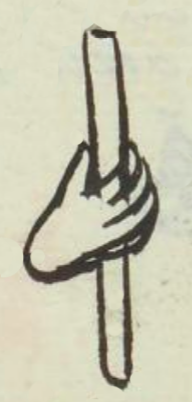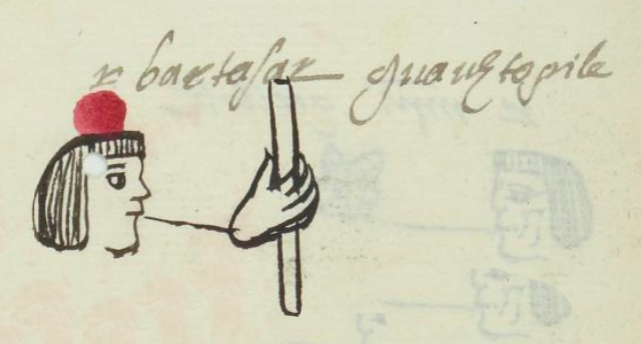Cuauhtopilli (MH522v)
This black-line drawing of the simplex glyph for the personal name Cuauhtopilli (or Cuauhtopile, if we allow that it is somewhat Hispanized) is attested as a man's name. The glyph shows a hand holding a staff (topilli) that was carried by rulers. The Cuauh- part of the name could be considered visible if the staff is made of wood. If the Cuauh- part comes from "eagle," then it is not visible. The hand seems to be a right hand. The staff is thin and maybe as long as four hand-widths.
Stephanie Wood
That this staff might be made of wood is suggested by the comparison with the tlalcuauhuitl (land-measuring stick) shown in the name for Tlalcuauh (below). Also, the topilli in our iconography collection has a terracotta color, suggesting it is made of wood.
Stephanie Wood
bartasar guauhtopile
Baltazar Cuauhtopile
Stephanie Wood
1560
Stephanie Wood
bordón, vara de justicia, nombres de hombres

cuahui(tl), tree, wood, stick, https://nahuatl.wired-humanities.org/content/cuahuitl
topil(li), staff of office, https://nahuatl.wired-humanities.org/content/topilli
Matrícula de Huexotzinco, folio 522v, World Digital Library, https://www.loc.gov/resource/gdcwdl.wdl_15282/?sp=124&st=image.
This manuscript is hosted by the Library of Congress and the World Digital Library; used here with the Creative Commons, “Attribution-NonCommercial-ShareAlike 3.0 License” (CC-BY-NC-SAq 3.0).






